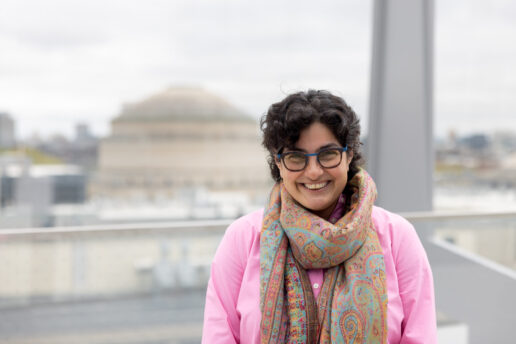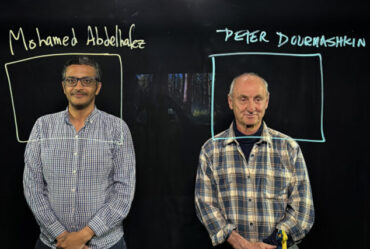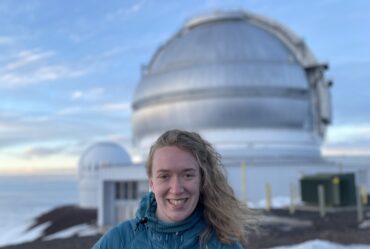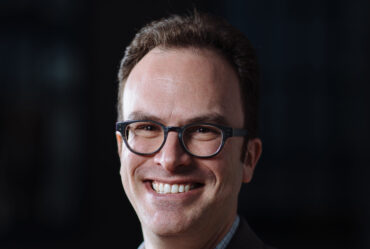
Meet Nergis Mavalvala PhD ’97, Dean of the School of Science
Mavalvala: “MIT has a place of trust in society when it comes to the work that we produce and the students that we produce.”
Dean Nergis Mavalvala PhD ’97 has made remarkable contributions to the Institute since becoming faculty in the Department of Physics in 2002 and becoming the School of Science Dean in 2020. As a researcher, Dean Mavalvala is renowned for her work in gravitational-wave detection, and spearheaded the LIGO (Laser Interferometer Gravitational-Wave Observatory) that made the first direct detection of gravitational waves back in 2016. Recently, Dean Mavalvala has been leading the effort in building the Institute-wide Life Sciences and Health Collaborative.
The Tech recently sat down with Dean Mavalvala, who spoke about topics ranging from how she keeps up with the latest developments in disparate fields of science to her favorite spot to grab a meal in Cambridge.
This interview has been condensed and lightly edited for clarity.
TT: Tell us about your journey to MIT?
I grew up in Pakistan, and then I came to Wellesley as an undergraduate. I did my PhD here at MIT, and I went to Caltech for a postdoc. Then I had this opportunity to come back to MIT to be on the faculty. And that was not an easy decision for me, because I didn’t really know the rest of the department very well. But it was a great decision. Since my PhD years, my research has been on gravitational waves. I’m an experimental physicist, so I’ve been sort of part of the team that designed and built detectors that, you know, made the first discoveries [in the field].
I’ve always thought a lot about what’s enabled me to be successful, and it’s been the work of others. I decided it was time for me to do that for others, and that’s how I became more involved in service and administration. I was Associate Dean of the Physics department for a few years, and then I became the Dean of the School of Science
What was most attractive to me is the opportunity to work with the students. I’ve been at many other universities, and it’s not like our students are the best, but they really are.
TT: How do you think the world’s perception of MIT has changed over time?
MIT’s reputation has really grown in the 30 years since I’ve been lurking around. Part of the meteoric shift has been the focus on becoming more diverse. When I first arrived here, there was no parity, no gender parity. And that really shifted. You could say, ‘What difference does that make?
One was that when you get people from different backgrounds together, the discourse becomes richer. When I was an undergraduate, people were much more singular in what they wanted to do. But there wasn’t a lot of thought about the rest of the world.
We now think a lot more about the rest of the world. That has then allowed us to be more visible to the outside world, not just as a collection of nerds, but also nerds who can think more broadly and have impact outside of just the widgets that we invent.
It’s still evolving in that direction. The work is not done.
TT: You have played a major role in the upcoming launch of the Life Sciences and Health Collaborative. How do you think that the Collaborative will address gaps that you’ve seen at MIT in these disciplines?
Our departments have an external review, which involves a visiting committee that comes and tells us how we might improve the departments. They would keep telling us that there’s all this amazing life sciences and health research going on in different parts of MIT, but people aren’t really talking to each other. A group of faculty got together and carried out a study called the VITALS report, or the Vision to Integrate, Translate, and Advance Life Sciences. It’s one thing to be anecdotal and another thing to actually go out and measure. They found that there was a large number of people who were hungry to collaborate, but they didn’t know how to find each other. They didn’t know how to fund that kind of work.
The Collaborative’s main function is to help those faculty and researchers come together. It also allows us, as a community, to come up with a handful of moonshots: things that we don’t know how to solve today, but if we put all of our collective efforts together, maybe we can move the needle on them.
There’s this sense that the digital revolution was born at MIT, and then it moved away to Silicon Valley. We also have such a big influence on the growth of the biotech revolution. Should we not take better care of being more coordinated and integrated with biotech companies in the area and hospitals? The Collaborative is essentially a big connector.
TT: How can students look forward to change if they’re working in the life sciences
One of the biggest parts of this initiative is going to be students, because students are the most likely to be able to work between multiple labs. If you want true collaboration, the students are doing that.
The Collaborative is going to create these opportunities to work in more than one area, to be truly multidisciplinary. Something which we are yet to define are these moonshots we want to go for. The amazing thing of working on a moonshot is that maybe 10 years from now, the students have graduated and there will be some major shift or discovery, and they’ll say, ‘Wow, I was part of that.’
TT: Your research deals with something pretty abstract. What is your philosophy and your approach to communicating science to the general public?
Since my PhD years, my research has been on gravitational waves. We’re at a moment in time in our society where communication in general is not working really well. For me, communication in science is storytelling. It’s really different from the execution of science, which is very precise and detail-oriented. The universe doesn’t reveal her secrets lightly. You have to work hard and be precise. But once you’ve done that, then you have to step back and understand that, except for a few of your colleagues, most people neither care about nor can follow the details. The key piece of this is, how do you tell a story which is filled with esoteric details and also generate trust that you did it right?
MIT has a place of trust in society when it comes to the work that we produce and the students that we produce. For science communication, that’s very important.
On the research side, I’m an experimentalist. The most important thing is to know which questions are important to ask. Not only are they important, but do we have the means to answer them? Can you see a path to it? If you ask important questions and then you set to work answering them, you will always learn new things.
TT: How has being an educator today changed from when you first joined MIT’s faculty?
Students are more stressed today. I know many older people who think this is just a lost generation. I have a completely different opinion.
This is a generation that has been burdened beyond breaking point. We have a lot of things to fix on this planet and our society. Since COVID, we have seen learning losses. The university system as a whole—and ours is no exception—has not really reacted to that. We haven’t sat down collectively and said, ‘Does our curriculum still make sense, given that students are coming in with different gaps than they did 20 years ago?’ We have some work to do.
The other unprecedented thing is how accomplished the students are. They’re coming in already having done things that most people in my generation did when we were 40. The cost of that is the stress that they feel, but it just blows my mind away what you guys have done by the time you’re 20.
TT: As the Dean of Science, you oversee many departments. How do you keep up with each of those areas?
I have a little notebook titled ‘Mind Blown.’ Every morning, one of the first things I do is read MIT News. Every morning, a new story pops up, sometimes about an amazing member of our community, sometimes about a scientific discovery, and I can’t tell you how often I have to catalog some one of those stories in my Mind Blown notebook. I have a fantastic Director of Communications, Julia Keller, who is very good at collecting the stories of discoveries and my colleagues.
Everybody at MIT lights up when you ask the question, ‘What are you working on?’ So that’s a wonderful way to learn about the things people are working on. And then I get this incredible answer. Sometimes I don’t understand it, and then I have to poke back a little. Another thing that we do in the School of Science is we have some amount of funds that we give away as grants that are proposal-based. We get these relatively short proposals where people tell you a little bit about the problem they’re working on. So I can’t say I read every article that comes out in Nature and Science, because that would be impossible, but this is a much better way to get a sense of what 300 of your colleagues are doing.
TT: For fun, what does a typical day in your life look like?
I live in Arlington, so it takes me about 25 minutes to bike in. I have an eight-year old son who I dropped to school on his bike on my way here. Most days, my days are spent meeting people, just meeting, meeting, meeting, which I really enjoy. By six in the evening, I bike back to pick my son up.
I’m an avid racket sports player. So some nights I go to a badminton club, some nights I come back to MIT to play squash. I have an older son as well. We’re all cyclists, and we’re all racket sports players.
TT: What is your favorite meal or snack spot in the area? What do you like to cook?
Since I was old enough to have to have an ID, I’ve been going to Miracle of Science right here on Mass Ave, across from Random Hall. Who can’t love that name? It’s a little local place and I’ve known the people who work there for all those years.
I mostly cook Asian food, some South Asian and some East Asian, some Middle Eastern. I’m a year-round griller. I will walk through knee-deep snow to our grill.


